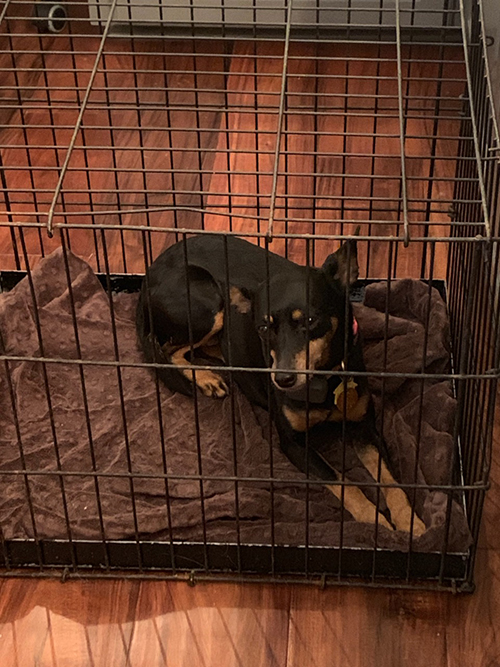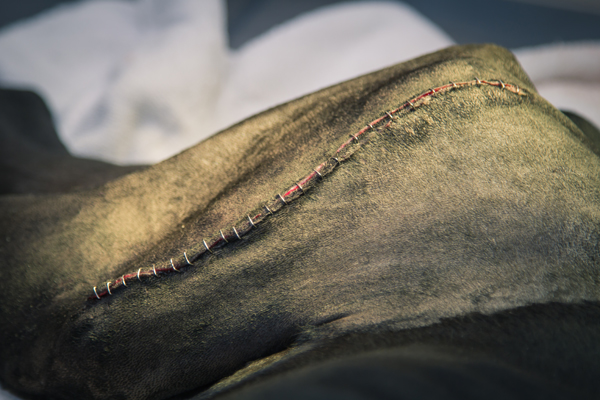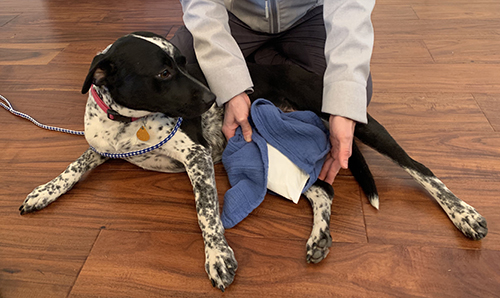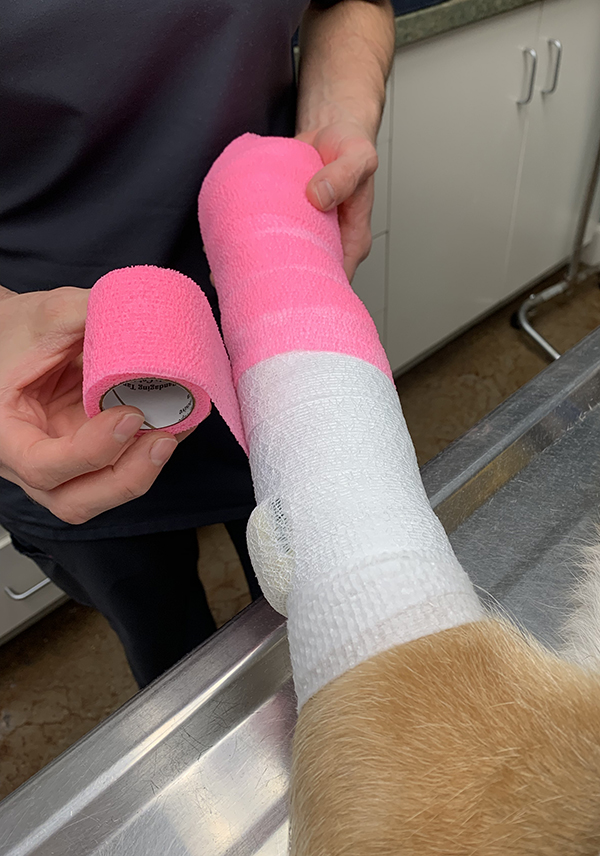After Surgery
Post Anesthesia Recovery
We will provide you with custom post-operative instructions for your pet, specific for their surgical condition.
Confinement

If your pet goes home the same day of surgery, they will likely be groggy for 12-24 hours. They should be confined to a small space with thick bedding while they recover from anesthesia and should be back to normal by the next day. Strict confinement is the most important initial aspect of post-operative care for all surgeries. Complete healing from most orthopedic surgeries requires some level of convalescence for 8-12 weeks, as that is how long normal bone requires for healing. The first 4-6 weeks requires strict confinement to a crate/kennel (just large enough for them to stand up, turn around, and lie down), with increases in activity based on recheck examinations and radiographs. Most soft tissue surgeries require 2-4 weeks of strict confinement post-operatively.
Skin Healing

Skin healing requires 10-14 days. Your pet should not be allowed to lick the incision during this time, as it can cause the incision to come apart and/or result in infection. There are several types of collars that can help prevent this, with Elizabethan collars (E-Collars) being the most common.
Cold and Warm Compressing

Cold compresses applied to the incision may be performed several times daily for 48-72 hours after surgery to minimize swelling. After this time, warm compresses may be initiated to promote healing. A protective layer should always be placed between the cold/warm compress and the skin to prevent tissue damage.
Bandage Care

If your pet is in a bandage, it should be kept clean and dry. If it becomes wet, soiled, or damaged, the bandage needs to be changed by a veterinarian. A plastic bag should be placed over the foot when walking outside to prevent the bandage from becoming wet/soiled. Do not allow your pet to lick or chew at the bandage. The bandage should be changed by a veterinarian once each week, or more often if the bandage becomes soiled, wet, or damaged, or if skin wounds develop that need to be treated more frequently. A stiff (not soft) E-collar is often the best way to prevent chewing of the splint. The toes should be monitored several times daily for swelling or coldness - swelling or coldness of the digits indicates that the bandage is too tight and requires removal and/or replacement by a veterinary professional. Please do not attempt to remove or replace the bandage without the guidance of a veterinarian - if after hours, please contact your local veterinary emergency clinic.